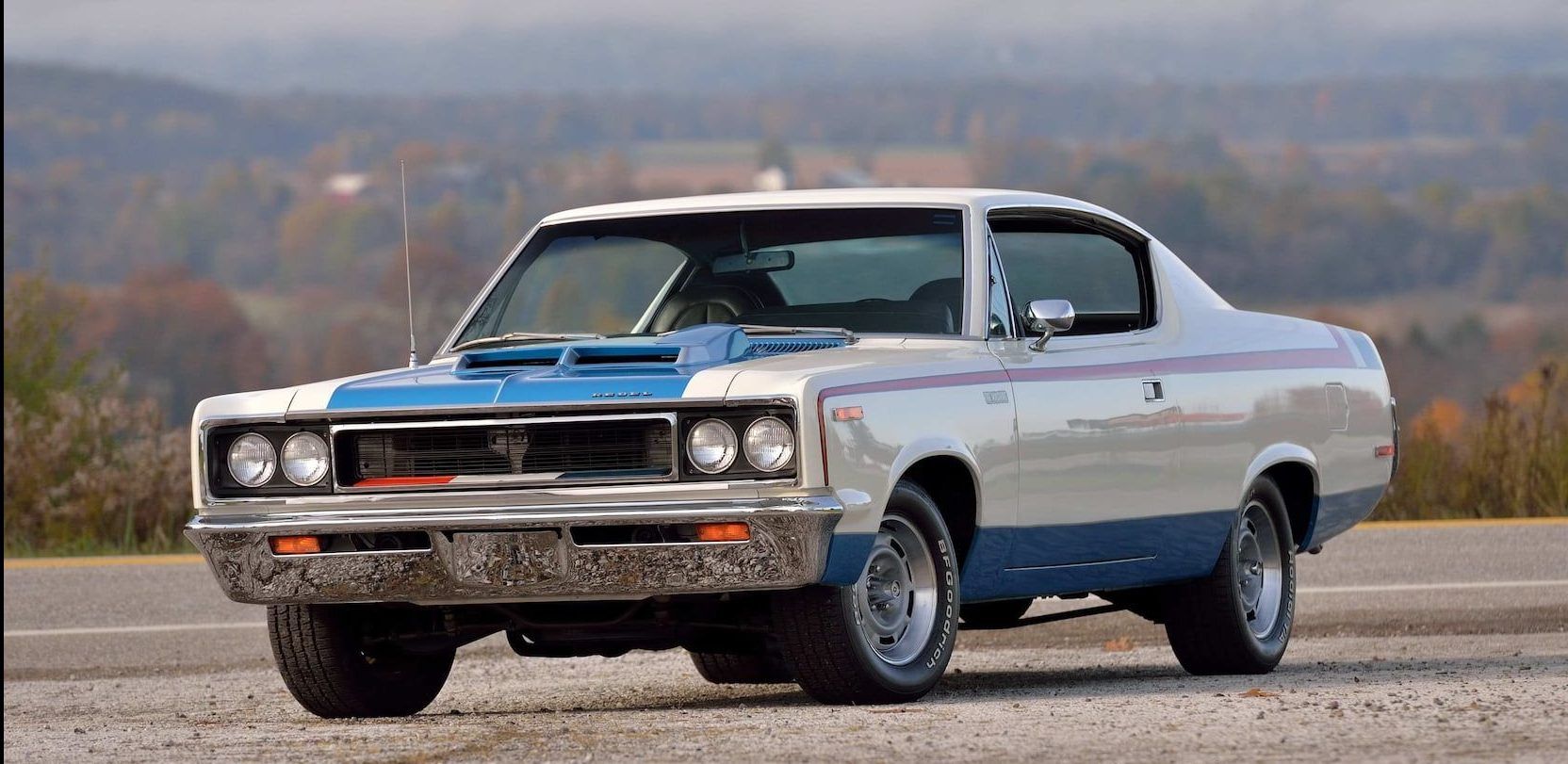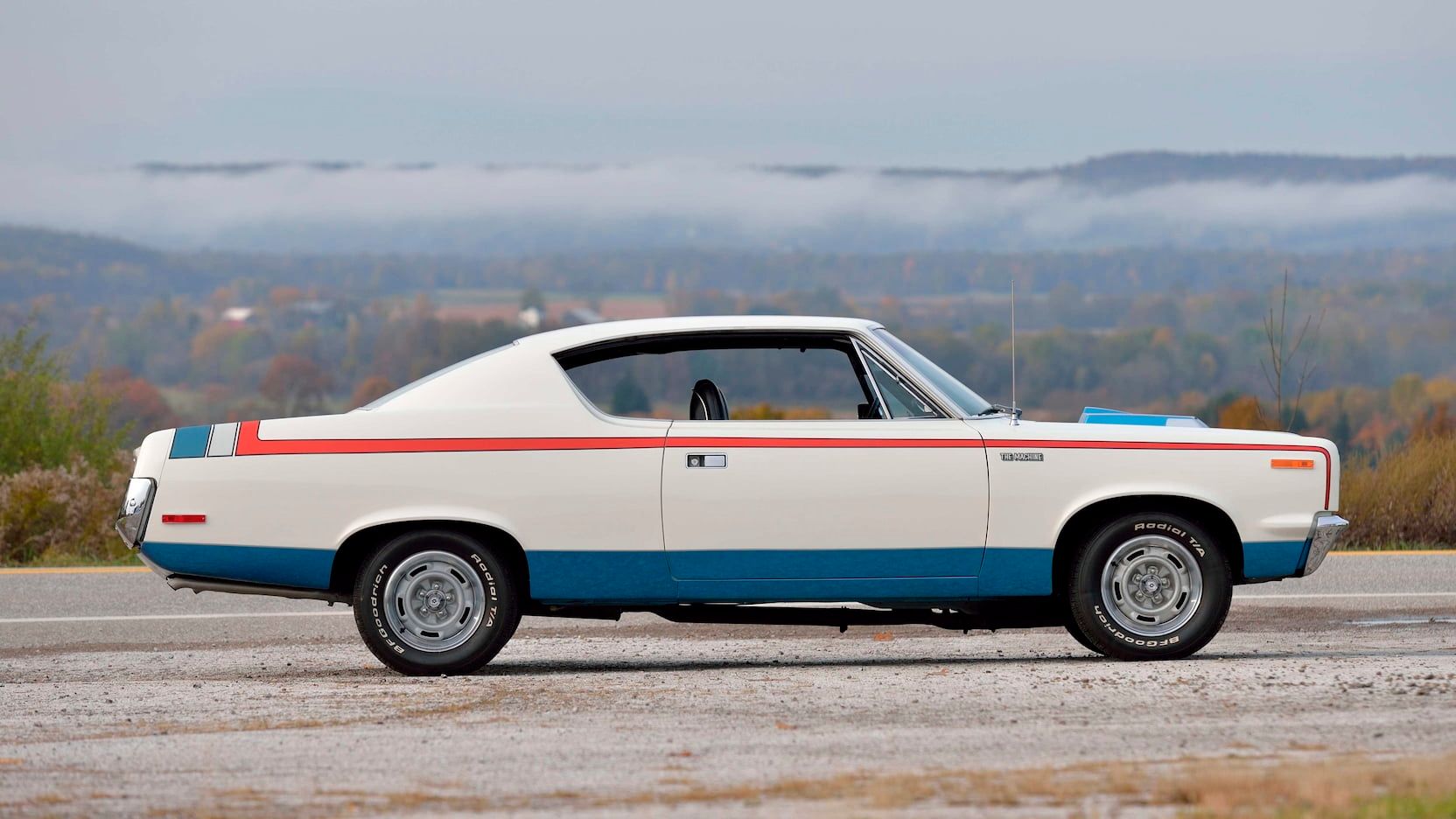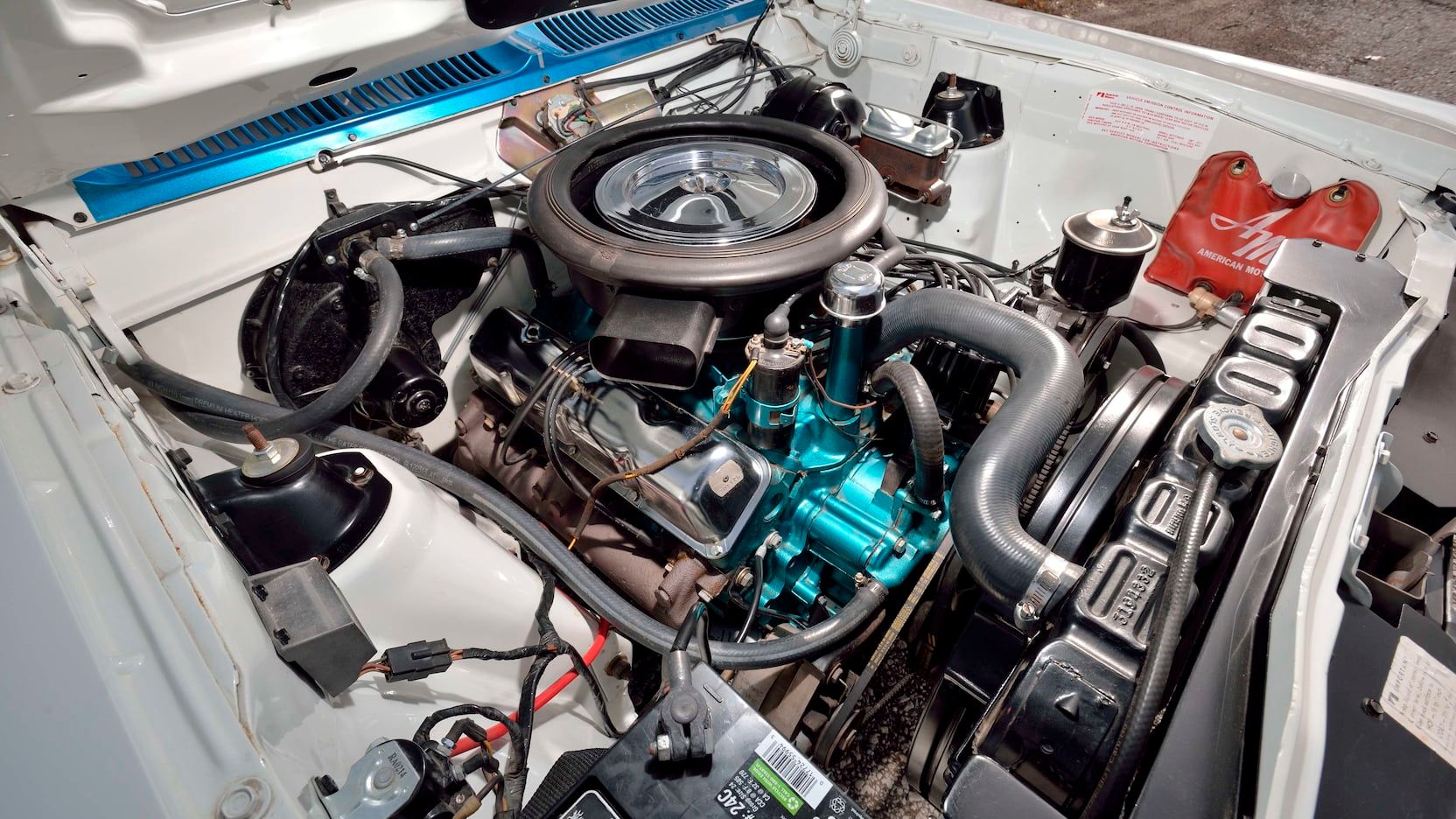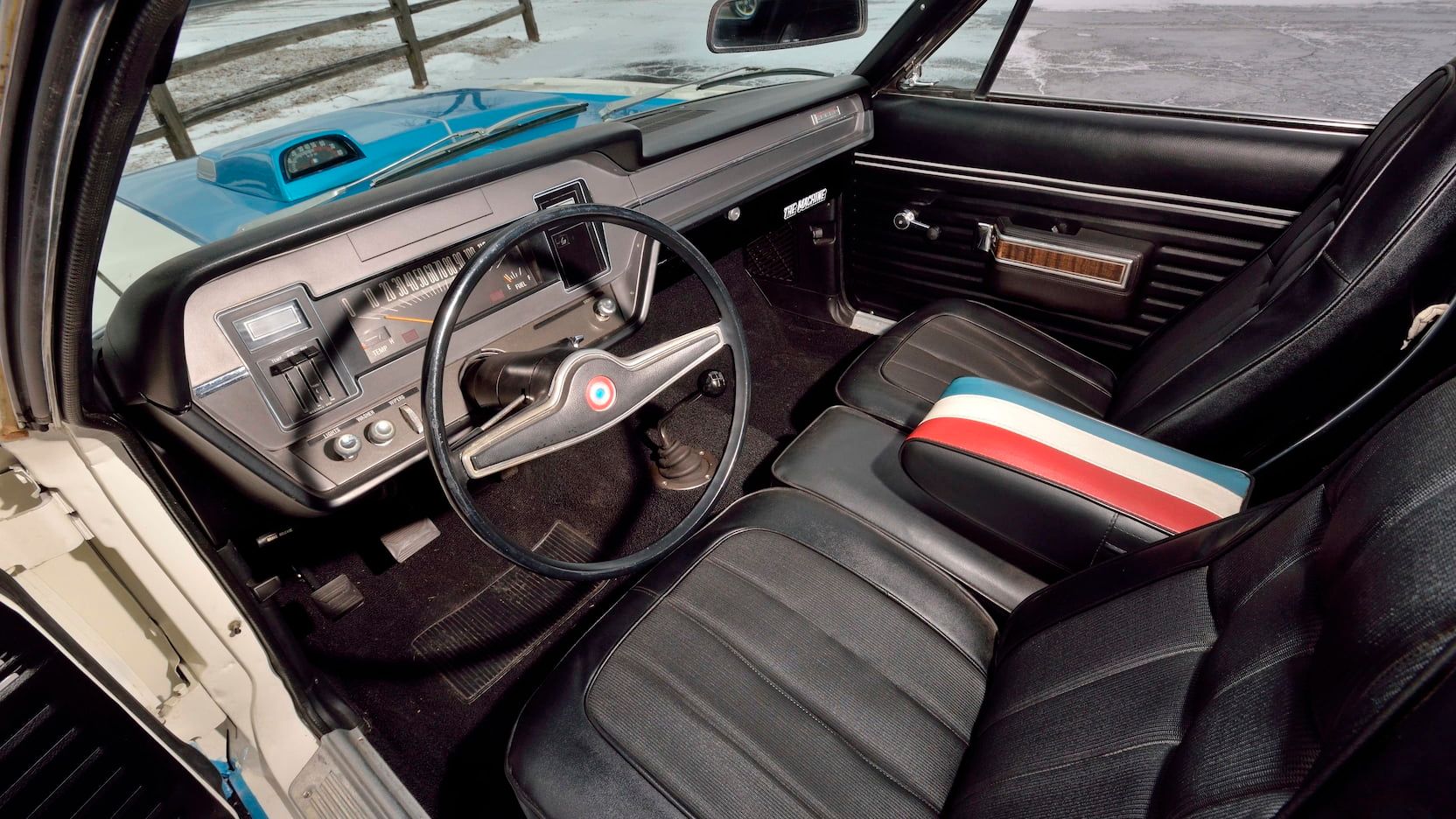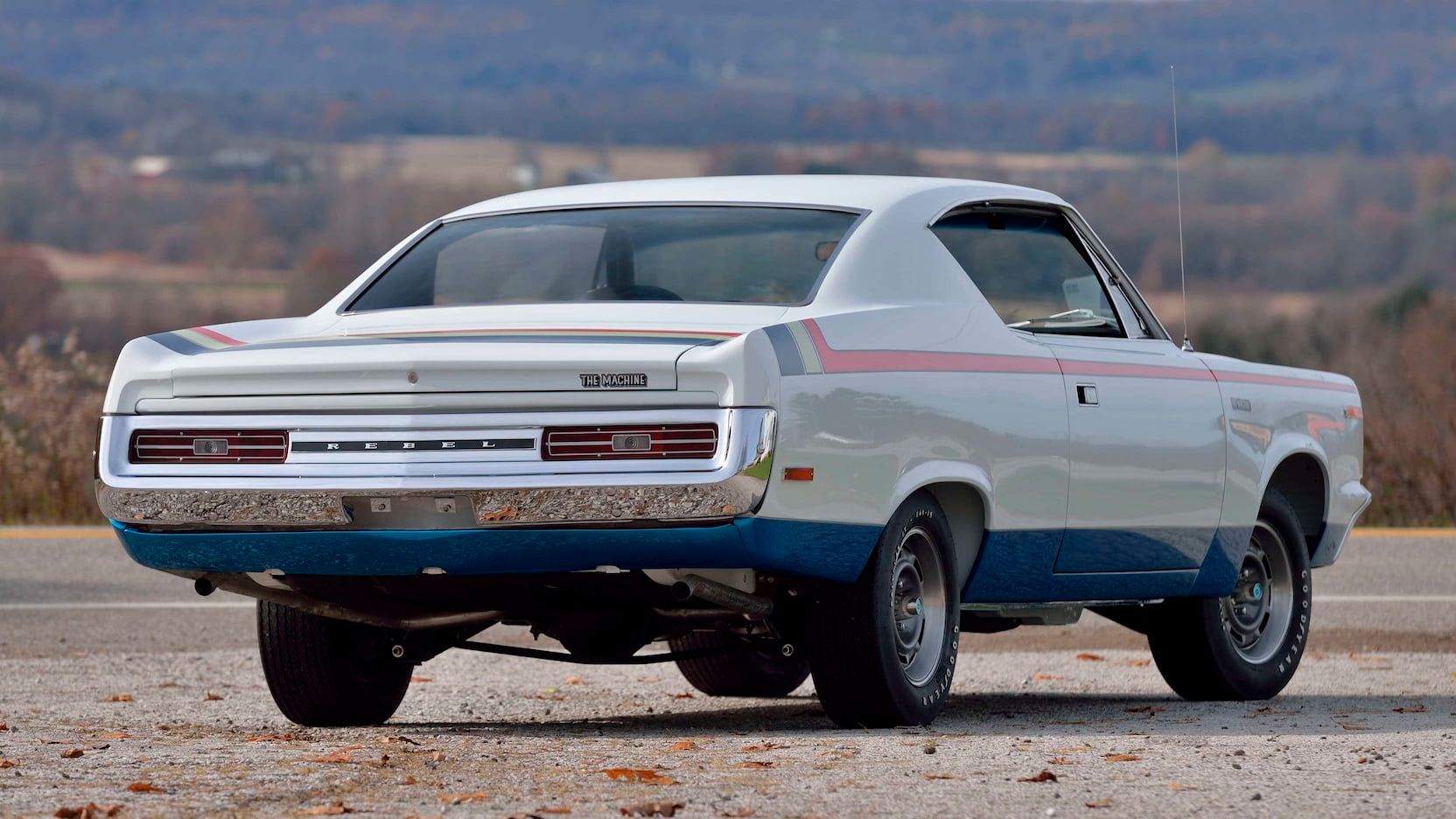A classic name that's been dead and gone from the car industry for decades now, AMC as a brand used to be the underdog of the American car scene, being the quirky yet sensible competitor to the Big Three. Formed through America's largest corporate merger up until that point, Nash-Kelvinator and Hudson came together to become AMC, carrying over nameplates like Rambler for their new model range.
While most of their history is forgotten in favor of the hilariously weird later commuters like the doorstop-shaped Gremlin and fishbowl-like Pacer, AMC did have some genuinely sweet muscle cars in their catalog.
Among them were awesome names like the AMX, but perhaps the baddest and most iconic of them all was this beast, the one-year wonder that was the 1970 Rebel "The Machine," often referred to as just the Rebel Machine.
Rebel With A Cause
To understand the 1970 Rebel, you have to go all the way back to the 1950s, before Detroit's muscle car wars had begun, or the muscle car name was even given to such V8 beasts. With AMC models still being given and sold under the Rambler name, alongside Nash and Hudson branding, the intermediate Rambler sedan would be the basis for the first Rebel. Taking their 327 cu-in V8 and stuffing it into the commuter in 1957, the Rambler Rebel was born and quickly proved itself as the fastest stock sedan of that year.
But, losing steam and that awesome 327 V8 in the following years, the Rambler Rebel died off in 1960, returning once more in 1966. Updated for 1967 with the aggressive sledgehammer looks seen here, the Rebel nameplate now stood for its own distinct model. Replacing the Rambler Classic, the new Rebel was an affordable, midsize car along the lines of Chevy's Chevelle or Ford's Fairlane.
Like the Chevelle and Fairlane too, the Rebel had several engine choices, trim levels, and body styles. Unlike those two midsize offerings though, the Rebel was missing out on the peak of the muscle car wars that were raging by 1968. While their smaller Javelin and AMX were decent competitors, many of the top dogs were hopped up midsize cars like Pontiac's GTO, and to make a real splash, AMC decided to turn the Rebel into something that could fight with them.
Americana To The Max
Released in 1969, AMC had developed a small but mighty beast of a muscle car known as the Hurst SC/Rambler and saw decent success with it. While the muscle virtues would help inspire the Rebel Machine, the most iconic carry-over was the all-American red white, and blue theme. Applying it to the Rebel 2-door hardtop using 3M stripes, the ultimate Rebel took shape for the 1970 model year, and would be dubbed "The Machine"
But, some flashy and proudly American looks weren't enough to compete with street kings like the GTO Judge and Hemi 'Cuda, so AMC naturally backed it up with their top-end V8 muscle, namely an iron block 390 cu-in V8 sending 340 hp and 410 lb-ft of torque to the rear wheels. Not just installing a bigger engine, the Rebel Machine also received upgrades like bigger exhaust manifolds, a high-flow intake manifold, a forged crankshaft and connecting rods, beefier rear coil springs and shocks from the Rebel station wagon, thicker front and back anti-roll bars, power front disc brakes, more effective engine cooling, as well as some sweet looking 15” Kelsey-Hayes wheels.
Controlling that power, a Borg-Warner T10 4-speed manual came standard, and was topped with a Hurst shifter - a 4-speed auto came as an option too. With a weight of 3,650 lbs, the Rebel Machine could crank out a 0-60 time of 6.4 seconds, and a standing quarter-mile time of 14.49 seconds at 93 mph, around the same as a 1970 GTO or Road Runner. With further performance upgrades on offer, the Rebel Machine could be made even more of a threat, with power rising to 400 hp and a limited-slip differential among other upgrades.
Badass Inside And Out
Like almost every other muscle car of the time, the Rebel Machine was spacious on the inside thanks to its midsize basis, with a focus on cruising in comfort and style being the main goal.
Design-wise, the interior is a wonderful example of the time being basic yet purposeful, with a sleek dashboard that looks like classic radio and jukebox design done with a simple yet refined layout. With perfectly analog gauges, a red, white, and blue armrest, manual windows, and not a single driver assist in sight, the Rebel Machine is typical of '60s muscle, with bits like air conditioning and cruise control being optional. One of the coolest features though was the hood-mounted tachometer, but this was not unique to AMC.
A Legendary Collectible
Like many of the Golden Age muscle cars that resided at the top of a manufacturer's lineup, the Rebel Machine is a sought-after car by collectors and carries a premium over normal Rebel models. A rather affordable youth-oriented car when new, the Rebel Machine originally sold for $3,475, making it the equivalent of $25,000 in today's money.
Only sold for the 1970 model year, the Rebel as an entire model would die that year as well, changing its name and design, becoming the Matador for 1971. While no conclusive record is out there, it's believed that between 1,936 and 2,326 Rebel Machines were made, making it as rare as it is flashy.
With that rarity contributing to its collectability, the Rebel Machine is among the most valuable AMC classics, usually selling for upwards of $75,000 when one comes up for auction today.
Sources: Hemmings, Hot Rod Network

